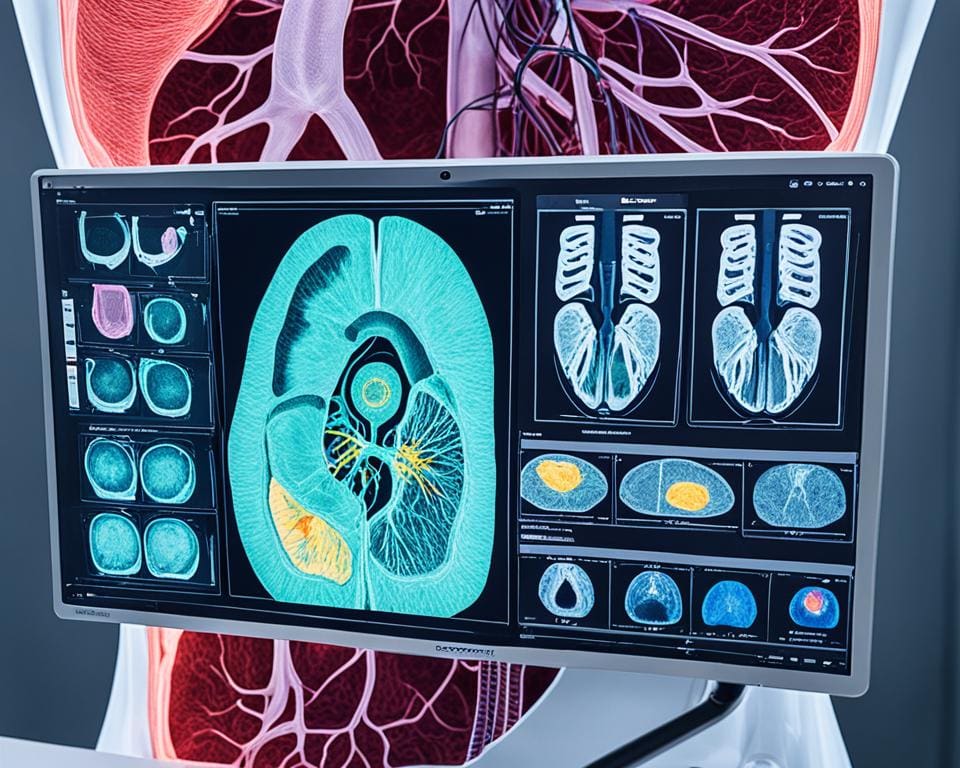In today’s world, ultrasound technology in disease detection stands as a beacon of hope for proactive health management. This non-invasive imaging technique utilizes high-frequency sound waves to create detailed images of internal structures, enabling the early identification of various health issues. Understanding what diseases can be detected by ultrasound is crucial for patients looking to stay ahead of potential medical concerns. With its ability to provide real-time insights, ultrasound for disease diagnosis plays an essential role in preventative healthcare, empowering individuals to take informed action regarding their well-being.
Understanding Ultrasound Technology in Disease Detection
Ultrasound technology plays a pivotal role in disease detection, harnessing sound waves to create images of the body’s internal structures. This safe and non-invasive method has become a cornerstone in medical imaging, offering a blend of speed, accuracy, and accessibility.
How Ultrasound Works in Medical Imaging
At the core of medical imaging with ultrasound is the process of emitting sound waves that traverse through human tissues. When these waves encounter different tissues, they bounce back, generating images that help visualize organs and systems. This innovative approach eliminates the use of ionizing radiation, making it suitable for patients of all age groups, including pregnant women. The convenience of ultrasound allows for versatile applications, ranging from examining the abdomen to monitoring heart conditions.
Advantages of Ultrasound Over Other Imaging Techniques
The benefits of ultrasound for disease diagnosis extend beyond safety. Compared to traditional imaging methods, such as CT scans or MRIs, ultrasound offers several advantages:
- Cost-Effective: Ultrasound procedures are generally more affordable.
- Real-Time Imaging: Medical professionals can observe images in real-time, which is crucial for procedures like fetal monitoring.
- Portability: Ultrasound machines can easily be transported, providing access in various settings.
- Non-Invasive: This technology allows for comprehensive examinations without the need for surgical intervention.

What Diseases Can Be Detected by Ultrasound
Ultrasound technology offers a wide range of diagnostic capabilities essential for identifying various health issues. With its non-invasive nature and real-time imaging, it plays a crucial role in the early detection and management of numerous diseases. Understanding what diseases can be detected by ultrasound is important for patients and healthcare providers alike.
Common Diseases and Conditions Identified through Ultrasound
Ultrasound is valuable in diagnosing a variety of common diseases detected by ultrasound. Some of these include:
- Gallstones
- Liver disease
- Kidney abnormalities
- Appendicitis
- Abdominal aortic aneurysms
- Certain types of cancer
Ultrasound Screening for Early Detection of Illnesses
In addition to diagnosing established conditions, ultrasound screening for illnesses proves beneficial for early detection. This technique helps identify potential health problems before they escalate. Routine screenings utilize ultrasound to monitor:
- Fetal anomalies during pregnancy
- Thyroid nodules
- Structural heart issues in newborns
By prioritizing ultrasound screenings, patients can take proactive steps toward ensuring their health and wellness.
The Benefits of Using Ultrasound for Disease Diagnosis
Ultrasound technology stands out as a non-invasive tool for disease diagnosis, providing numerous benefits for both healthcare providers and patients. One of the most compelling advantages is its ability to deliver immediate results, allowing for timely medical decisions. This aspect is particularly crucial when it comes to detecting illnesses with ultrasound, as speed can significantly influence treatment outcomes. With the absence of ionizing radiation, ultrasound is also a safer option for patients, making it suitable for a wide range of health conditions, including those in vulnerable populations such as expectant mothers and infants.
Another important benefit of ultrasound for disease detection is its versatility across various medical specialties. Whether in obstetrics, cardiology, or emergency medicine, ultrasound equipment is adept at addressing diverse diagnostic challenges. The mobility of ultrasound machines further enhances their accessibility, enabling use in settings such as rural clinics and emergency rooms. This makes it easier for medical professionals to conduct thorough assessments, regardless of the location, thereby improving access to healthcare.
Furthermore, the detailed imaging that ultrasound provides plays a critical role in enabling accurate diagnoses. By honing in on specific areas, healthcare providers can develop effective treatment plans tailored to individual patient needs. In summary, the benefits of ultrasound for disease detection are profound, offering a reliable method for detecting illnesses while ensuring patient safety and accessibility. As the field of medical imaging evolves, ultrasound remains an invaluable asset in enhancing healthcare outcomes and managing various health conditions.









